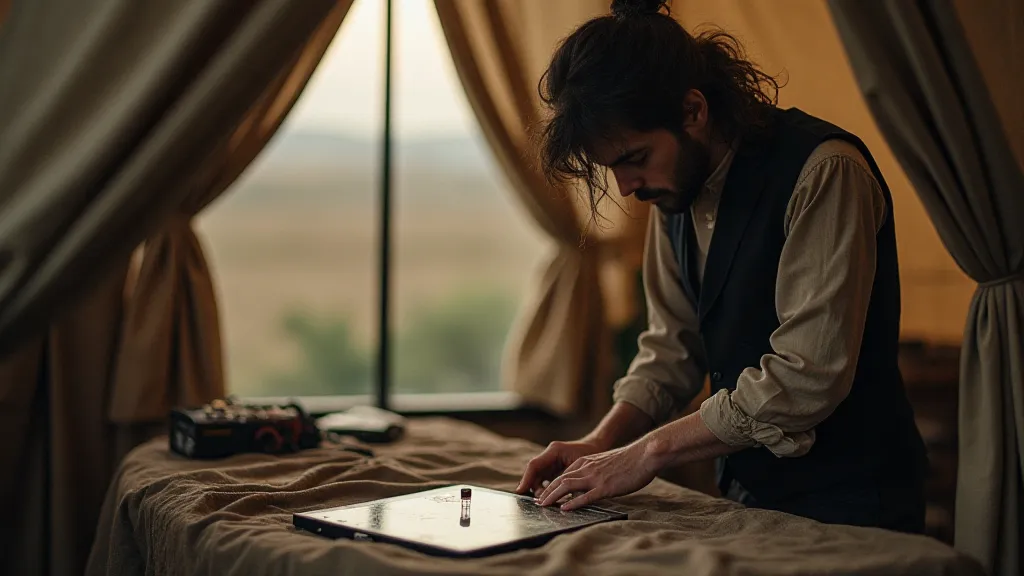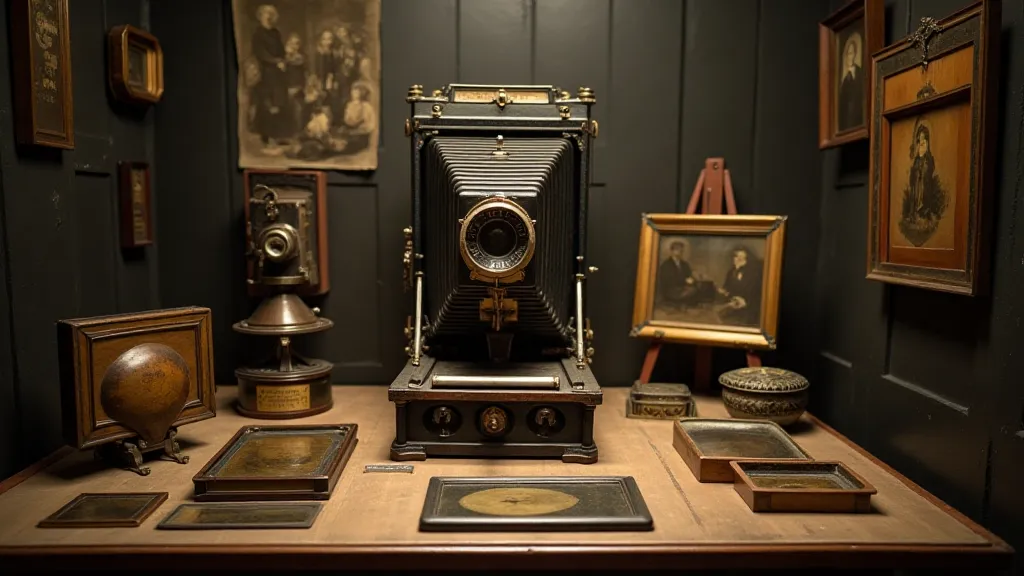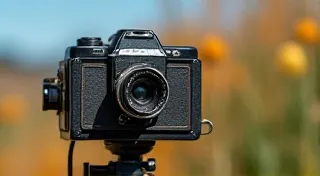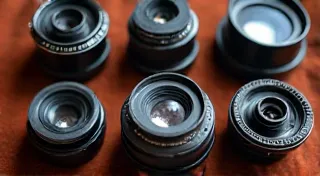Wet Plate Collodion: A Complex and Beautiful Process
The wet plate collodion process, dominant in photography between the 1850s and 1880s, remains a captivating subject for camera collectors and photography enthusiasts. While undeniably complex, the stunning clarity and artistic quality of the images it produced solidified its place in photographic history. This article delves into the intricacies of this fascinating process, exploring its steps, challenges, and the two most common results: the Ambrotype and the Tintype.
The Process: A Race Against Time
What truly distinguished wet plate collodion from earlier photographic methods was the requirement that the photographic plate be prepared, exposed, and developed *while still wet*. This dramatically shortened the timeframe for the entire procedure, demanding a meticulous and highly organized photographer. To truly appreciate the undertaking, consider the evolution of photographic equipment. While the principles of image capture have remained compelling, the journey from early daguerreotypes to wet plate collodion shows a significant shift in both technology and accessibility, something that can be further explored by looking at common problems with antique cameras and how they were, and still are, managed.
- Preparing the Plate: A sheet of glass or metal (often iron) was meticulously cleaned.
- Coating with Collodion: A solution of collodion (a type of cellulose nitrate) was poured onto the cleaned surface, creating a thin, translucent film.
- Sensitizing in Silver Nitrate: The collodion film was then immersed in a solution of silver nitrate. This step made the plate light-sensitive. The plate *had* to be exposed before the silver nitrate dried – hence the "wet" aspect of the process.
- Exposure: The sensitized plate was then placed in the camera and exposed. Exposure times varied greatly, often ranging from several seconds to several minutes, depending on lighting conditions and desired effect.
- Development: Immediately after exposure, the plate was taken to a darkroom and developed using a reducing agent.
- Fixing: The image was then fixed to make it permanent.

Ambrotypes: The ‘Undercut’ Plate
An Ambrotype is a positive image on glass, typically backed with a dark material (like black velvet or paper) to simulate a print. The key difference between an Ambrotype and a negative (like a Daguerreotype) is that the Ambrotype produces a direct positive image, not a reversed one. The plate is typically “undercut,” meaning the silver layer is slightly overexposed to enhance contrast and clarity.
Ambrotypes were relatively inexpensive to produce, making them accessible to a wider range of clients. This contributed significantly to their popularity throughout the 1850s and early 1860s. The advancements in photographic processes, much like the careful design and manufacturing of the Hasselblad, led to wider adoption and higher quality results.
Tintypes: The Ironclad Image
Unlike Ambrotypes, which use glass, Tintypes are created on a sheet of black-lacquered iron or steel. The process is similar to the Ambrotype process, but the iron plate eliminates the need for a backing material. Tintypes were significantly cheaper to produce than Ambrotypes, contributing to their widespread popularity, particularly among the working class.
The robust nature of iron also meant Tintypes were more durable than glass plates, making them a favorite for soldiers during the American Civil War. They were often nicknamed “jelly plates” due to their soft, somewhat flexible feel. The techniques used to produce high-quality results in wet plate collodion photography bear a surprising resemblance to the precise engineering found in modern camera lens development, as described in the evolution of camera lenses.

The Science Behind the Image: Collodion, Silver Nitrate, and Light
Understanding the chemical reactions involved in the wet plate collodion process further illuminates the photographer's skill and the challenges they faced. Collodion, derived from cellulose nitrate, forms the foundation of the photographic emulsion. When poured onto the glass or metal plate, it creates a delicate, transparent film. This film is then sensitized by immersion in a solution of silver nitrate, a critical step. Silver nitrate reacts with the collodion, forming silver halide crystals – the light-sensitive components of the image. These crystals, unseen by the naked eye, become the foundation for the latent image formed upon exposure to light.
The exposure itself is a complex interplay of light intensity, exposure time, and the inherent sensitivity of the silver halide crystals. The photographer had to carefully consider these factors to achieve the desired result. The development process, which involves a reducing agent, converts the exposed silver halide crystals into metallic silver, creating the visible image. Finally, fixing the image removes the unexposed silver halide, ensuring its permanence. It’s a remarkable demonstration of chemistry meeting artistry.
Challenges and Legacy
The wet plate collodion process presented considerable challenges. The need for a portable darkroom, the constant struggle against time, and the inherent fragility of the plates required a photographer to be highly skilled and prepared. Even slight variations in temperature, humidity, or chemicals could negatively impact the final result. The entire process was incredibly time-consuming, requiring meticulous attention to detail and a deep understanding of the photographic process. Mistakes were costly, both in terms of materials and time wasted.
Imagine the photographer, lugging their equipment, carefully preparing the plates, meticulously exposing them, and then rushing back to the darkroom to develop the image – all while racing against the clock before the collodion dried. This level of precision and skill set is something rarely seen in modern photography, contributing to the unique aesthetic and historical significance of wet plate collodion images.
The inherent instability of the process also created unique challenges for preservation. Early wet plate collodion images were vulnerable to damage from scratches, moisture, and chemical degradation. While modern conservation techniques can mitigate some of these issues, the fragility of the originals remains a constant concern for archivists and collectors.

The Cultural Impact: Portraits, Landscapes, and Documenting a Nation
The rise of wet plate collodion photography coincided with a period of significant social and technological change in the 19th century. The process revolutionized portraiture, making it accessible to a wider range of people beyond the wealthy elite. Suddenly, ordinary citizens could have their likeness captured for posterity, a privilege previously reserved for the aristocracy. This democratization of portraiture had a profound impact on the social landscape of the time.
Beyond portraits, wet plate collodion photography was also used to document landscapes, architecture, and everyday life. These images provide invaluable insights into the 19th century, offering a glimpse into the lives and experiences of people who lived during this era. The ability to capture such detail and clarity with the available technology was truly remarkable.
During the American Civil War, wet plate collodion photography played a crucial role in documenting the conflict. Photographers like Mathew Brady and Alexander Gardner captured iconic images of battlefields, military camps, and the aftermath of battles. These photographs provided a visceral and unflinching portrayal of the war, shaping public opinion and influencing the course of history.
Modern Revival: Recreating a Lost Art
Despite its decline in the late 19th century, the wet plate collodion process has experienced a revival in recent years. Contemporary photographers, captivated by its unique aesthetic and historical significance, are rediscovering the art of wet plate collodion photography. These photographers are meticulously recreating the original techniques, using the same equipment and processes to produce stunning images that evoke the spirit of the 19th century.
The modern revival isn’t just about recreating the aesthetic; it’s about understanding the history of photography and appreciating the dedication of those early pioneers, similar to the challenges faced in learning about antique cameras.





